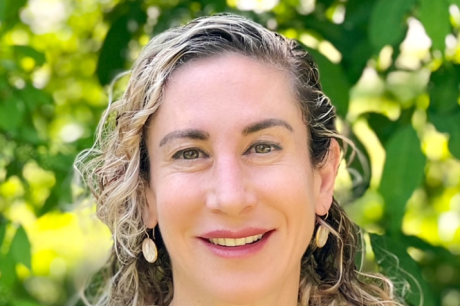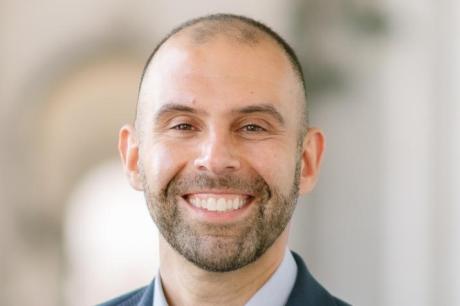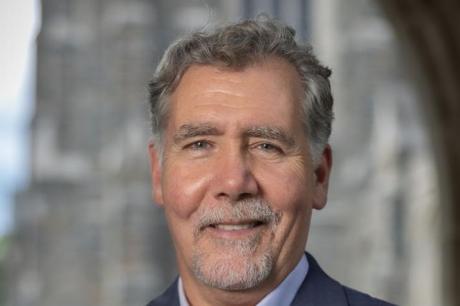
Sterling's personal note-taking process during the Photovoice Review Session
Published June 26, 2014, last updated on April 9, 2018 under Voices of DGHI
By Vaib Penukonda
Paul Quinn College Student Researcher
Bass Connections in Global Health project
When entering Google StreetView online, I let go of my cursor and the screen goes dark. From the bird's eye view emerges a placid picture of a classic American road lined by churches, homes, and retailers, the majority of which appear abandoned. Stagnant in appearance, another click to the left morphs my visual perspective allowing me to continue my simple journey through Simpson Stuart Road.
Months ago, I took my first tour of Simpson Stuart in the privacy of my dorm room, hoping to catch a sanitary glimpse of the experience that awaited me this summer. Unfortunately, every stimuli that entered my mind that day and throughout the course of our semester-long research class passed through my own filter of what would be important to me and thus important to the project. My lens shaped my understanding. Through my initial conversations on the benefits of strengthening community ties through a narrowing of Highland Hills main artery, Simpson Stuart Road, I projected my own mentality of effectiveness on to the project, my supposed voice. Arriving in Highland Hills, I unfortunately knew that solutions existed for many of the community's problems. However, Google cannot measure the depths of an image's social fabric- the trials and tribulations, the success and heart that this community of Highland Hills possesses.
Working with Aidee, Alyssa, Destiny and the rest of the Duke team, my 4-week experience in Dallas continually grappled with the idea of our purpose. Unlike most traditional research projects, our's was obfuscated behind layers of differing motivations. As students, were we to side with our professors in looking towards their final research and our own research ambitions, work with the community to ameliorate their situation, or "take it all in" like good students? Credence lies behind all of these causes, but as student-researchers our perspectives continually switched, ultimately creating a painful dichotomy between our research and our service where neither could be neglected nor accomplished. This struggle of purpose was never more evident than during my photo voice review session with a participant named Sterling. As I stared at the necessary questions to ask Sterling, our conversation restyled itself from an ordinary Photovoice review to a sharing of personas and stories. With his insightful comments on the future of Highland Hills and the interactions between humans and nature, Sterling's voice as a photographer and as a community member came to light in a colorful fashion. New voices emerged from these sessions, yelling louder than Google StreetView ever could. However, this richness in conversation came at the cost of research-oriented clarity. Given the very individualized relationship each team member has with this struggle, our team took the narrative of photovoice in different directions. With each of these struggles of purpose, a new layer of complexity was added to our project and to my own voice about the community.
Through my own eyes, I took my Bass Connections experience to be primarily educational, developing my intuitions on participatory research and the importance of empowering new voices in communities, but with additional thought, the principles behind journey have fostered novel reflections of the educational value that service plays in both education and research. The intersection of these three terms has created new dimensions for further research, for more communities like Highland Hills, and for more progress.


